B1.2 Compose and decompose whole numbers up to and including 50, using a variety of tools and strategies, in various contexts.
Activity 1: Relational Rods (Decomposing Using Manipulatives)
Materials
Relational rods
Directions
Form teams of two.
Provide teams with relational rods.
Ask the teams to take out a purple rod.
Ask students to find other rods that are the same length when placed side by side (2 red rods, for example).

Ask students to think of other possibilities.
Facilitate a group discussion to highlight solutions.
Assign a numerical value to the combinations; for example, the purple rod equals 4 units (4 white rods) and the red rod equals 2 units, so (4 = 2 + 2).
Continue with the other combinations: \(4 = 1 + 1 + 1 + 1\), \(4= 1 + 3\), \(4 = 2 + 1 + 1\), etc.
Ask students to select other rods and point out the different combinations.
Source: translated from L'@telier - Ressources pédagogiques en ligne (atelier.on.ca). p, 1.
Activity 2: Decomposition of Cows
Directions
Divide a baking sheet in half with masking tape.
Following a story based on a theme such as farm animals, have students come up with different ways to arrange them on the two parts of the baking sheet; for example, prepare cut-outs of brown cows and white cows with magnets.
Tell students that there must be 5 cows in total in the field (on the baking sheet) and that there must be white and brown cows.
Ask students to find different combinations of 5 cows. If they choose 3 brown cows and 2 white cows, put 3 brown cows on one side of the sheet and 2 white cows on the other side.
Continue by pointing out the four possibilities: 1 and 4, 4 and 1, 2 and 3, 3 and 2.
Ask students if it is possible to have 5 brown cows and 0 white cows and justify the answer (the answer is no because there must be some of each colour).
Continue with 6, 7 and 8 cows, highlighting each time the different possibilities.
Record the results:
- With 5 cows, there were 4 combinations.
- With 6 cows, there are 5 combinations.
- With 7 cows, there are 6 combinations.
- With 8 cows, there are 7 combinations.
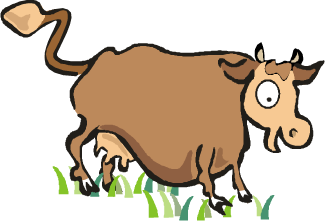
Ask students what they notice and have them predict the number of combinations for 9 cows. Check their answers.
Ask students to predict the number of combinations for 10, 20, and 50 cows.
Repeat the activity with some modifications. Ask students to find different combinations for placing the cows. This time there are still 5 cows to start with, but there can be brown cows or white cows. Note that this small change adds two more combinations: 0 and 5, 5 and 0. So for 5 cows, there are 6 combinations; for 6 cows, 7 combinations, etc.
Source: translated from L’@telier - Ressources pédagogiques en ligne (atelier.on.ca), p. 3-4.
Activity 3: Number Grid and Cards (Decompose)
Materials
- number grid
- cards numbered from 4 to 9
Players
2 players or 2 teams of two
Goal
Cover four numbers to form a horizontal, vertical, or diagonal line.
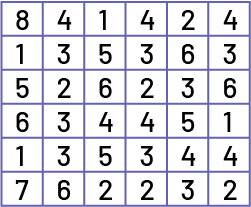
Directions
Each player or team takes turns turning over a numbered card (for example, 7). The player or team tries to find two numbers that touch each other and make up that number, such as 6 and 1 or 4 and 3. When they find two such numbers, they should cover them with a counter.
Play continues until a player or team forms a line of four numbers. If the player or team cannot find two numbers that add up to the number on the card, they skip their turn.
At the end of the game, ask students to identify another way to play the game.
Note: It is very important to model the game before the students play it.
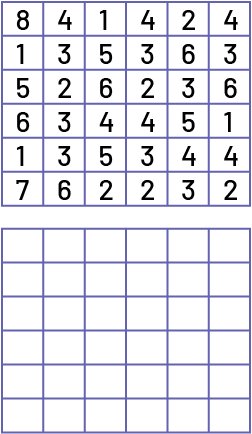
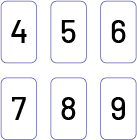
Source: translated from L'@telier - Ressources pédagogiques en ligne (atelier.on.ca), p. 5-7.
Activity 4: Dominoes (Composing)
Circle four dominoes of your choice.
Name and represent the total number of dots on these four dominoes using other manipulatives or a model of your choice.
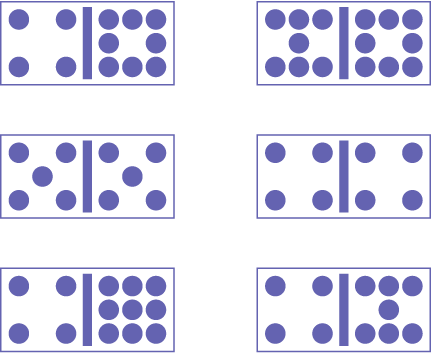
Source: translated from En avant, les maths! ML, Numbers, p. 19.
